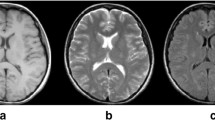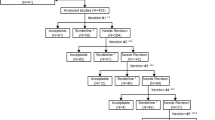Abstract
This study proposed and evaluated a two-dimensional (2D) slice-based multi-view U-Net (MVU-Net) architecture for skull stripping. The proposed model fused all three TI-weighted brain magnetic resonance imaging (MRI) views, i.e., axial, coronal, and sagittal. This 2D method performed equally well as a three-dimensional (3D) model of skull stripping. while using fewer computational resources. The predictions of all three views were fused linearly, producing a final brain mask with better accuracy and efficiency. Meanwhile, two publicly available datasets—the Internet Brain Segmentation Repository (IBSR) and Neurofeedback Skull-stripped (NFBS) repository—were trained and tested. The MVU-Net, U-Net, and skip connection U-Net (SCU-Net) architectures were then compared. For the IBSR dataset, compared to U-Net and SC-UNet, the MVU-Net architecture attained better mean dice score coefficient (DSC), sensitivity, and specificity, at 0.9184, 0.9397, and 0.9908, respectively. Similarly, the MVU-Net architecture achieved better mean DSC, sensitivity, and specificity, at 0.9681, 0.9763, and 0.9954, respectively, than the U-Net and SC-UNet for the NFBS dataset.




Similar content being viewed by others
Availability of Data
The NFBS data that support the findings of this study are publicly available. The IBSR data that support the findings of this study are available on request from the corresponding portal of the Neurolmaging Tools and Resources Collaboratory (NITRC). The reference to the data is provided in the manuscript and here as follows: Data citation: NFBS Dataset “NFBS Skull-Stripped Repository.” http://preprocessed-connectomes-project.org/NFB_skullstripped/. (Accessed 19 Aug 2020). IBSR Dataset “NITRC: IBSR: Tool/Resource Info.” https://www.nitrc.org/projects/ibsr. (Accessed 19 Aug 2020).
References
A. S. Lundervold and A. Lundervold, “An overview of deep learning in medical imaging focusing on MRI,” Zeitschrift fur Medizinische Physik, vol. 29, no. 2. Elsevier GmbH, pp. 102–127, May 01, 2019, https://doi.org/10.1016/j.zemedi.2018.11.002.
J. Yang, L. Lu, S. Ma, W. Tan, D. Zhao, and N. Chen, “An automatic method to extract brain tissue in CT data,” in Proceedings - 2016 8th International Conference on Information Technology in Medicine and Education, ITME 2016, Jul. 2017, pp. 70–72, https://doi.org/10.1109/ITME.2016.0025.
I. Despotović, B. Goossens, and W. Philips, “MRI segmentation of the human brain: Challenges, methods, and applications,” Computational and Mathematical Methods in Medicine, vol. 2015. Hindawi Publishing Corporation, 2015, https://doi.org/10.1155/2015/450341.
F. Hosseini, H. Ebrahimpourkomleh, and M. Khodamhazrati, “Quantitative Evaluation of Skull Stripping Techniques on Magnetic Resonance Images,” 2015.
G. Fein et al., “Statistical parametric mapping of brain morphology: Sensitivity is dramatically increased by using brain-extracted images as inputs,” Neuroimage, vol. 30, no. 4, pp. 1187–1195, May 2006, https://doi.org/10.1016/j.neuroimage.2005.10.054.
H. Hwang, H. Z. U. Rehman, and S. Lee, “3D U-Net for Skull Stripping in Brain MRI,” Appl. Sci., vol. 9, no. 3, p. 569, Feb. 2019, https://doi.org/10.3390/app9030569.
A. Fatima, A. R. Shahid, B. Raza, T. M. Madni, and U. I. Janjua, “State-of-the-Art Traditional to the Machine- and Deep-Learning-Based Skull Stripping Techniques, Models, and Algorithms,” J. Digit. Imaging, Jul. 2020, https://doi.org/10.1007/s10278-020-00367-5.
P. Kalavathi and V. B. S. Prasath, “Methods on Skull Stripping of MRI Head Scan Images—a Review,” Journal of Digital Imaging, vol. 29, no. 3. Springer New York LLC, pp. 365–379, Jun. 01, 2016, https://doi.org/10.1007/s10278-015-9847-8.
J. Hamwood, D. Alonso-Caneiro, S. A. Read, S. J. Vincent, and M. J. Collins, “Effect of patch size and network architecture on a convolutional neural network approach for automatic segmentation of OCT retinal layers,” Biomed. Opt. Express, vol. 9, no. 7, p. 3049, Jul. 2018, https://doi.org/10.1364/boe.9.003049.
J. V. Manjón, S. F. Eskildsen, P. Coupé, J. E. Romero, D. L. Collins, and M. Robles, “Nonlocal intracranial cavity extraction,” Int. J. Biomed. Imaging, vol. 2014, 2014, https://doi.org/10.1155/2014/820205.
R. Dey and Y. Hong, “Compnet: Complementary segmentation network for brain MRI extraction,” in Lecture Notes in Computer Science (including subseries Lecture Notes in Artificial Intelligence and Lecture Notes in Bioinformatics), 2018, vol. 11072 LNCS, pp. 628–636, https://doi.org/10.1007/978-3-030-00931-1_72.
S. Bauer, L.-P. Nolte, and M. Reyes, “Skull-stripping for tumor-bearing brain images.” Accessed: 19 Aug 2020. [Online]. Available: http://www.istb.unibe.ch/content/surgical_technologies/medical_image_analysis/software/.
“Insight Journal (ISSN 2327-770X) - A Skull-Stripping Filter for ITK.” https://www.insight-journal.org/browse/publication/859. (Accessed 19 Aug 2020).
R. Souza et al., “An open, multi-vendor, multi-field-strength brain MR dataset and analysis of publicly available skull stripping methods agreement,” NeuroImage, vol. 170. Academic Press Inc., pp. 482–494, Apr. 15, 2018, https://doi.org/10.1016/j.neuroimage.2017.08.021.
S. A. Sadananthan, W. Zheng, M. W. L. Chee, and V. Zagorodnov, “Skull stripping using graph cuts,” Neuroimage, vol. 49, no. 1, pp. 225–239, Jan. 2010, https://doi.org/10.1016/j.neuroimage.2009.08.050.
J. Kleesiek et al., “Deep MRI brain extraction: A 3D convolutional neural network for skull stripping,” Neuroimage, vol. 129, pp. 460–469, Apr. 2016, https://doi.org/10.1016/j.neuroimage.2016.01.024.
O. Ronneberger, P. Fischer, and T. Brox, “U-net: Convolutional networks for biomedical image segmentation,” in Lecture Notes in Computer Science (including subseries Lecture Notes in Artificial Intelligence and Lecture Notes in Bioinformatics), 2015, vol. 9351, pp. 234–241, https://doi.org/10.1007/978-3-319-24574-4_28.
A. Jog et al., “Fast Infant MRI Skullstripping with Multiview 2D Convolutional Neural Networks,” 2019.
Y. Gao et al., “A multi-view pyramid network for skull stripping on neonatal T1-weighted MRI,” Magn. Reson. Imaging, vol. 63, pp. 70–79, Nov. 2019, https://doi.org/10.1016/j.mri.2019.08.025.
J. Wei, Y. Xia, and Y. Zhang, “M 3 Net: A multi-model, multi-size, and multi-view deep neural network for brain magnetic resonance image segmentation,” Pattern Recognit., vol. 91, pp. 366–378, Jul. 2019, https://doi.org/10.1016/j.patcog.2019.03.004.
Y. Zhang et al., “Fully Automatic White Matter Hyperintensity Segmentation using U-net and Skip Connection,” in Proceedings of the Annual International Conference of the IEEE Engineering in Medicine and Biology Society, EMBS, Jul. 2019, pp. 974–977, https://doi.org/10.1109/EMBC.2019.8856913.
S. F. Eskildsen et al., “BEaST: Brain extraction based on nonlocal segmentation technique,” 2012, https://doi.org/10.1016/j.neuroimage.2011.09.012.
“NFBS Skull-Stripped Repository.” http://preprocessed-connectomes-project.org/NFB_skullstripped/. (Accessed 19 Aug 2020).
“NITRC: IBSR: Tool/Resource Info.” https://www.nitrc.org/projects/ibsr. (Accessed 19 Aug 2020).
A. Makropoulos et al., “Automatic whole brain MRI segmentation of the developing neonatal brain,” IEEE Trans. Med. Imaging, vol. 33, no. 9, pp. 1818–1831, 2014, https://doi.org/10.1109/TMI.2014.2322280.
M. J. Cardoso et al., "AdaPT: An adaptive preterm segmentation algorithm for neonatal brain MRI,” Neuroimage, vol. 65, pp. 97–108, Jan. 2013, https://doi.org/10.1016/j.neuroimage.2012.08.009.
F. Zhou, Y. Zhuang, H. Gong, J. Zhan, M. Grossman, and Z. Wang, “Resting State Brain Entropy Alterations in Relapsing Remitting Multiple Sclerosis,” PLoS One, vol. 11, no. 1, p. e0146080, Jan. 2016, https://doi.org/10.1371/journal.pone.0146080.
P. Tanskanen et al., “Hippocampus and amygdala volumes in schizophrenia and other psychoses in the Northern Finland 1966 birth cohort,” Schizophr. Res., vol. 75, no. 2–3, pp. 283–294, Jun. 2005, https://doi.org/10.1016/j.schres.2004.09.022.
M. M. Herting et al., “Development of subcortical volumes across adolescence in males and females: A multisample study of longitudinal changes,” Neuroimage, vol. 172, pp. 194–205, May 2018, https://doi.org/10.1016/j.neuroimage.2018.01.020.
J. Leote, R. G. Nunes, L. Cerqueira, R. Loução, and H. A. Ferreira, “Reconstruction of white matter fibre tracts using diffusion kurtosis tensor imaging at 1.5T: Pre-surgical planning in patients with gliomas,” Eur. J. Radiol. Open, vol. 5, pp. 20–23, 2018, https://doi.org/10.1016/j.ejro.2018.01.002.
K. Chen, J. Shen, and F. Scalzo, “Skull stripping using confidence segmentation convolution neural network,” in Lecture Notes in Computer Science (including subseries Lecture Notes in Artificial Intelligence and Lecture Notes in Bioinformatics), 2018, vol. 11241 LNCS, pp. 15–24, https://doi.org/10.1007/978-3-030-03801-4_2.
A. Guha Roy, S. Conjeti, N. Navab, and C. Wachinger, “QuickNAT: A fully convolutional network for quick and accurate segmentation of neuroanatomy,” Neuroimage, vol. 186, pp. 713–727, Feb. 2019, https://doi.org/10.1016/j.neuroimage.2018.11.042.
Z. Liu, B. Xiao, Y. Li, and Y. Fan, “Context-endcoding for neural network based skull stripping in magnetic resonance imaging,” Oct. 2019, Accessed 19 Aug 2020. [Online]. Available: http://arxiv.org/abs/1910.10798.
M. Shaikh, G. Anand, G. Acharya, A. Amrutkar, V. Alex, and G. Krishnamurthi, “Brain tumor segmentation using dense fully convolutional neural network,” in Lecture Notes in Computer Science (including subseries Lecture Notes in Artificial Intelligence and Lecture Notes in Bioinformatics), 2018, vol. 10670 LNCS, pp. 309–319, https://doi.org/10.1007/978-3-319-75238-9_27.
G. Wang, W. Li, S. Ourselin, and T. Vercauteren, Automatic brain tumor segmentation using convolutional neural networks with test-time augmentation. In International MICCAI Brainlesion Workshop (pp. 61-72). Springer, Cham. Sept. 2018.
S. Ioffe and C. Szegedy, “Batch normalization: Accelerating deep network training by reducing internal covariate shift,” in 32nd International Conference on Machine Learning, ICML 2015, Feb. 2015, vol. 1, pp. 448–456, Accessed: 19 Aug 2020. [Online]. Available: https://arxiv.org/abs/1502.03167v3.
N. Srivastava, G. Hinton, A. Krizhevsky, and R. Salakhutdinov, “Dropout: A Simple Way to Prevent Neural Networks from Overfitting,” 2014.
T. Tong, G. Li, X. Liu, and Q. Gao, “Image Super-Resolution Using Dense Skip Connections.”
S. Hussain, S. M. Anwar, and M. Majid, “Segmentation of Glioma Tumors in Brain Using Deep Convolutional Neural Network,” Neurocomputing, vol. 282, pp. 248–261, Aug. 2017, https://doi.org/10.1016/j.neucom.2017.12.032.
S. P. Thakur, J. Doshi, S. Pati, S. M. Ha, C. Sako, S. Talbar, and S. Bakas, Skull-Stripping of Glioblastoma MRI Scans Using 3D Deep Learning. In International MICCAI Brainlesion Workshop (pp. 57-68). Springer, Cham. Oct. 2019.
J. Du, The frontier of SGD and its variants in machine learning. In Journal of Physics: Conference Series (Vol. 1229, No. 1, p. 012046). IOP Publishing. May 2019.
Code Faster with Line-of-Code Completions, Cloudless Processing https://www.kite.com/python/answers/how-to-split-data-into-training-and-test-sets-randomly-in-python.
Funding
It is a funded project. The funding Agency is the Higher Education Commission of Pakistan (Grant # 2(1064)).It is carried out at Medical Imaging and Diagnostics Lab (MIDL) at COMSATS University Islamabad (CUI) Islamabad, under the umbrella of the National Center of Artificial Intelligence (NCAI), Pakistan.
Author information
Authors and Affiliations
Corresponding author
Ethics declarations
Ethics Approval
In this study, two publicly available datasets were used having anonymous information. Therefore, no preapproval is required from any ethical committee.
Conflict of Interest
The authors declare that they have no conflict of interest.
Additional information
Publisher's Note
Springer Nature remains neutral with regard to jurisdictional claims in published maps and institutional affiliations.
Rights and permissions
About this article
Cite this article
Fatima, A., Madni, T.M., Anwar, F. et al. Automated 2D Slice-Based Skull Stripping Multi-View Ensemble Model on NFBS and IBSR Datasets. J Digit Imaging 35, 374–384 (2022). https://doi.org/10.1007/s10278-021-00560-0
Received:
Revised:
Accepted:
Published:
Issue Date:
DOI: https://doi.org/10.1007/s10278-021-00560-0




